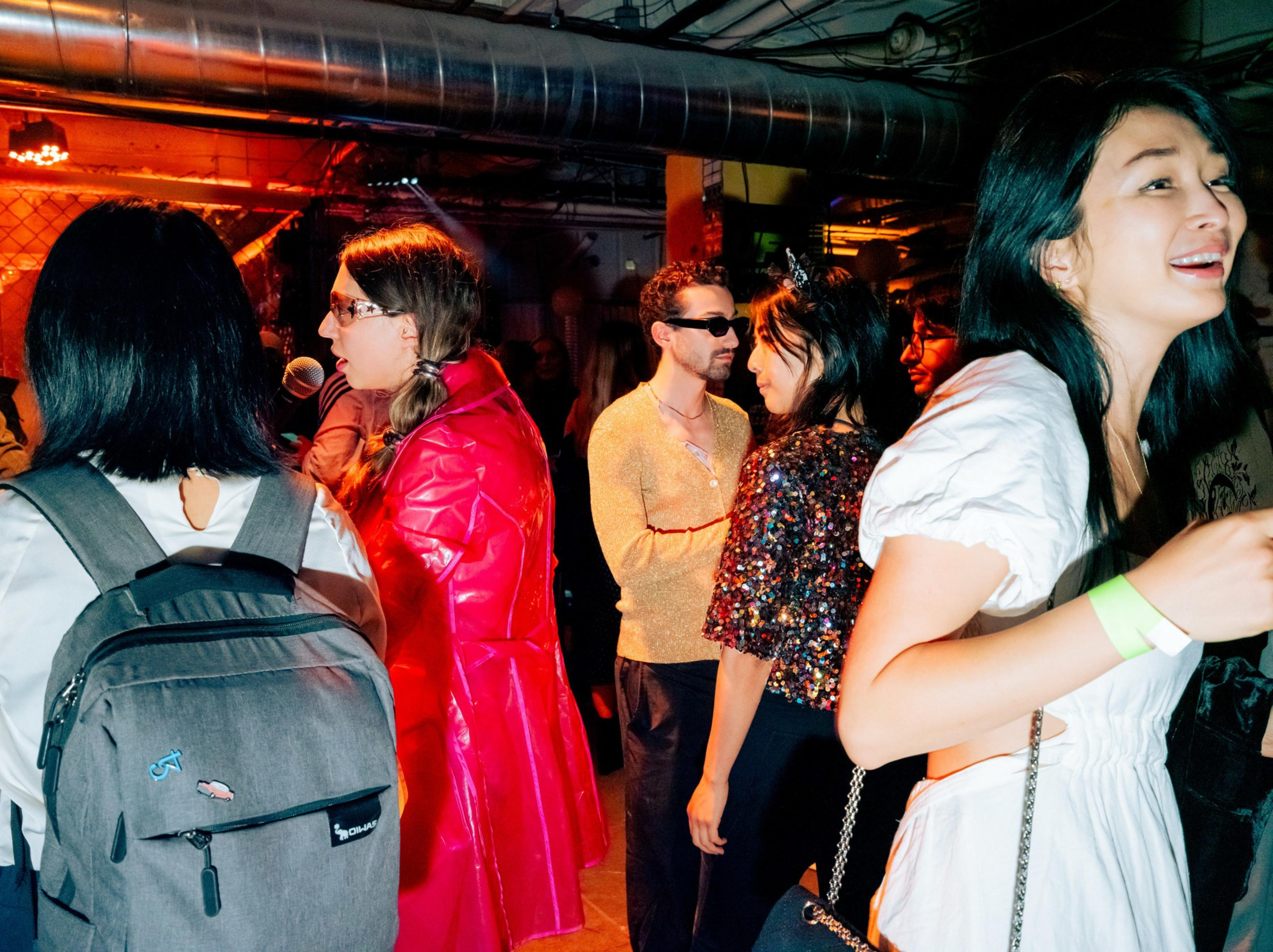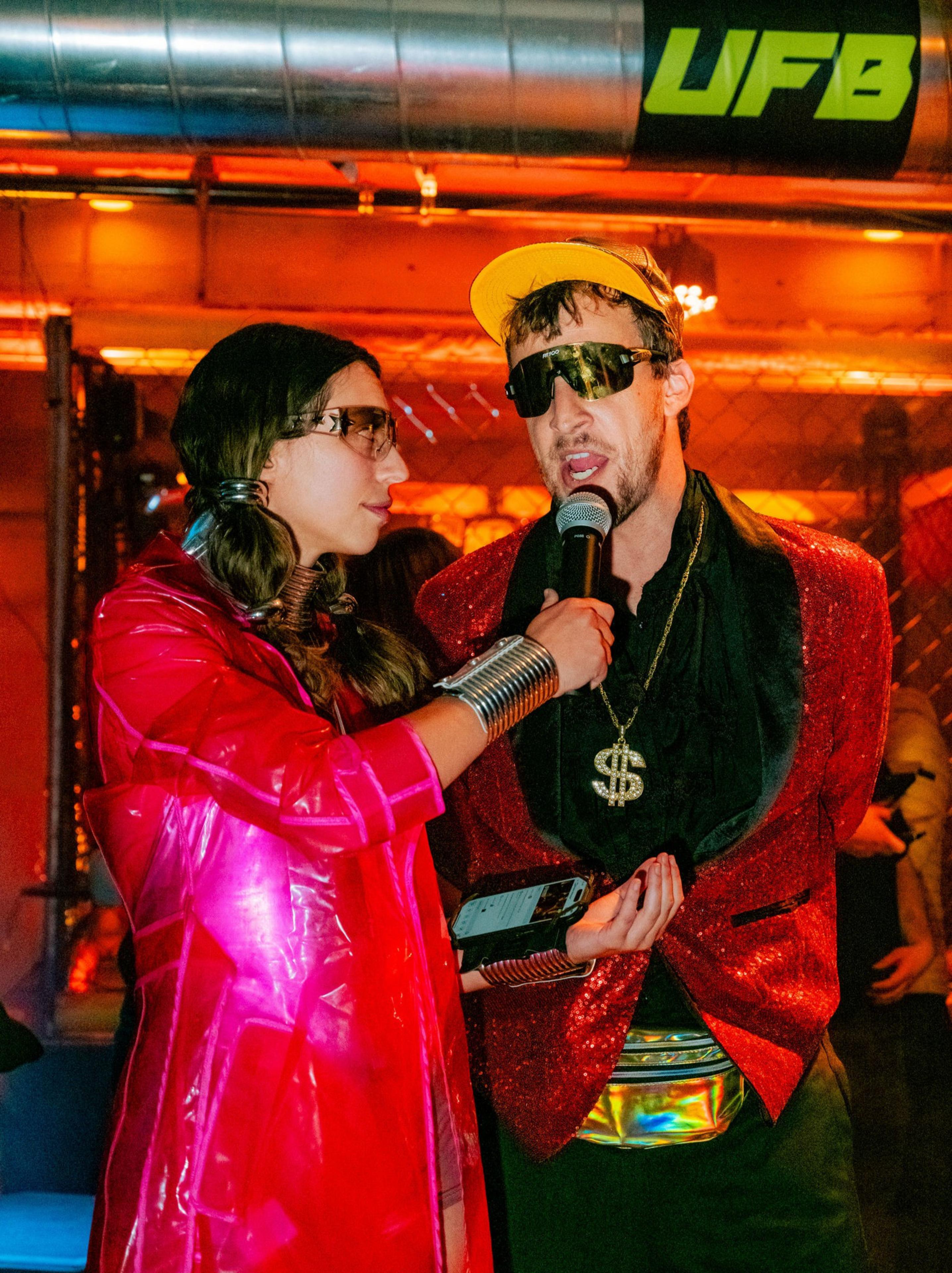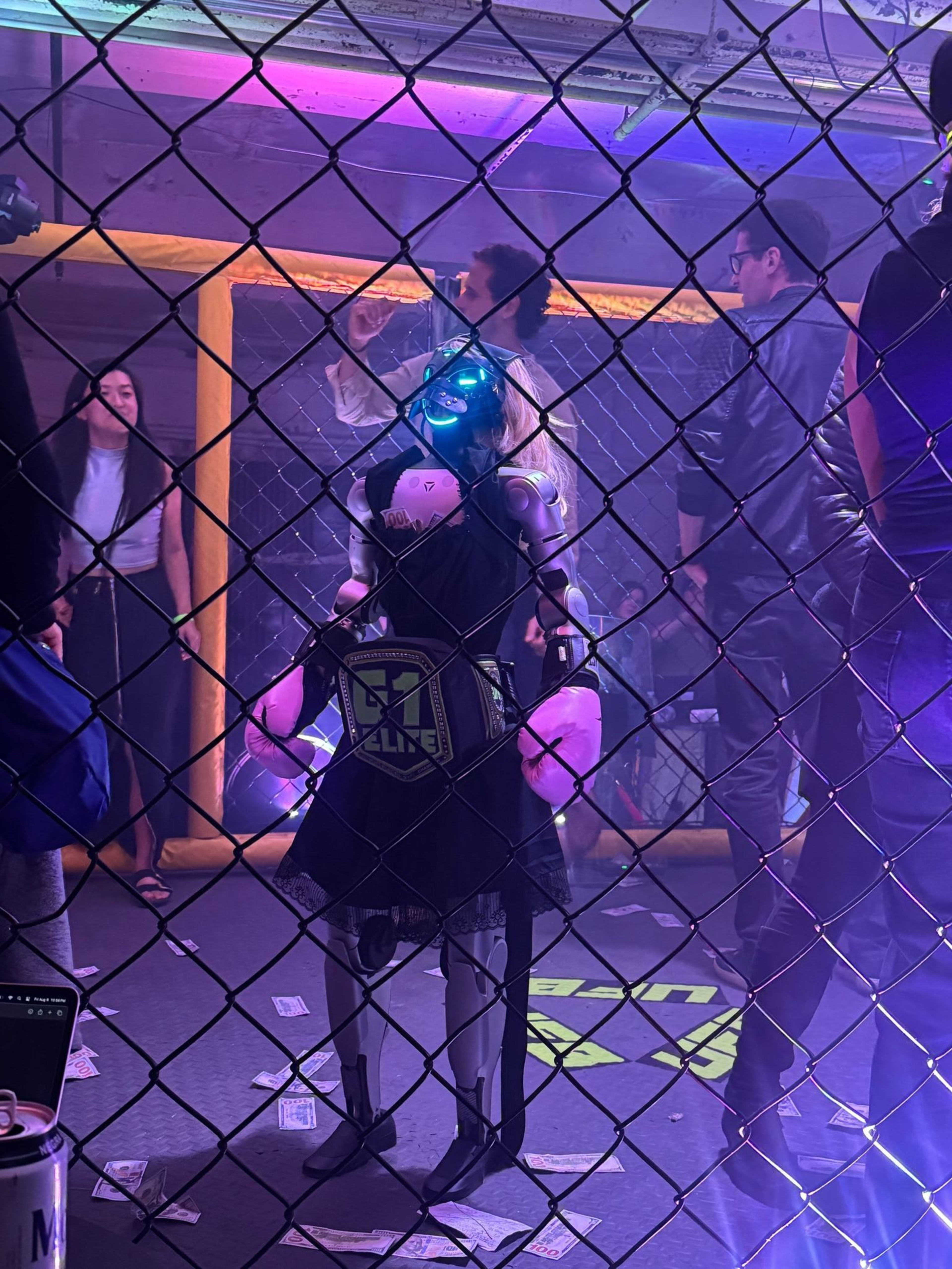The basement of Frontier Tower, a new coworking highrise on Market Street, transformed into an underground cyberpunk arena Friday night for a robot fight club. Hundreds of young tech workers, artists, and influencers packed around the cage-ring, pink and red lights flashing, as a Booster Robotics T1 humanoid-bot duked it out against a G1 humanoid from Unitree.
Even the ring “girl” was a robot, though of a more DIY variety: a fishnet-clad leg attached to a Roomba that whizzed around hoovering up dollar bills thrown into the ring.
Human emcees in glittering jackets narrated the action. The robots were dressed in costumes and full protective boxing gear — helmets and gloves that obscured their robotic frames.
If you squinted, you might have thought these short contestants were children playing dress-up — until they began to move in a distinctly unhuman way.


“It felt like stepping into a sci-fi film” said Maggie Sin, the 30-year-old CEO of My Companions (opens in new tab), a startup that creates AI twins for creators. “The match was part gladiator and part tech showcase.”
This was the second robot fight club of 2025. The first boxing match, in July, went so viral that organizers Xenia and Vitaly Bulatov, a husband-and-wife team who work in marketing and robotics R&D and have an office in the building, felt they’d spawned a new sport.
So they launched Ultimate Fighting Bots, the “world's first robot combat league,” piloted by humans but with all punches from robots.

As with the first time around, the Bulatovs kept Friday’s affair shrouded in mystery. It was very much an IYKYK type of event, as evinced by the many social media posts making plaintive (opens in new tab) requests about how and where (opens in new tab) to get tickets.
“I have never seen a reaction to a robotics demo like I am seeing to humanoids now,” Vitaly posted on X. “Robotics was historically B2B. Entertainment is what unlocks robotics for consumers and scale now.”
“Robot fighting feels like a cyberpunk concept come to life,” said Guillaume Verdon, aka Based Beff Jezos, the cofounder of Extropic AI, a startup that develops thermodynamic computing. “This could turn into a tournament like Formula One, where engineering teams compete.”


At the show, posters advertising “Bot brawling betting services” and “Hologram escort services” lined the walls, a robotic neon-lit therablaster machine dispensed orange and blue drinks through a series of clear pipes, and cyberpunk-themed photobooths snapped commemorative pictures.
Guests were not invited to the part of Frontier Tower where the Bulatovs keep their $50,000 Unitree Robotics Humanoid G1 and their $75,000 Boston Dynamics Spot dog.
The vibe was surreal, with pulsing lights, glowing neon, and a giddy excitement percolating the room. Faces pushed against the cage. The beats were loud; the mics, turned up. Between bouts, you could wander neon-lit labyrinthine corridors leading to backrooms stocked with instant ramen, bubble chairs, arcade games, and even a robot bartender.


Constance Li, the founder of Sentient Futures (opens in new tab), attended both robot fight clubs this summer. “This time, they brought out the premium Unitree G1 robots and gave them personalities and backstories,” she said. Attendees could root for Colonel Havoc (opens in new tab), Jockchain (opens in new tab), and others. The robots are increasingly sophisticated, she said. “[They] moved much more naturally and were able to both deliver and withstand more blows.”
But Li pondered the future of these fight clubs. “What if the robots eventually end up feeling pain? How would we recognize it if it happens?” she said. “Will this industry become more exploitative, like cock and dog fighting, or will the robots have some share in the wealth and excitement of their matches, like UFC?”

Sofiia Shvets, CEO of Claid AI, a generative AI photography startup, enjoyed the bouts. “It was more fun than I expected,” she said, noting that the time between rounds could be shortened; the robot R&R took around 20 minutes.
“I’m exhausted but happy,” said Omelia Atreides (opens in new tab), a technologist and artist, resplendent in a form-fitting red suit, who helped produce the event. “We planned the last fight in four days, but this one took four weeks — it had so much more.”
Going forward, the production promises to be even more elaborate. “We put safety first and confined some of the interaction,” said Emerson Segura, who helped run robot operations. “In the future the complexity, interactivity, and proximity to people could go up along with the entertainment value.”

